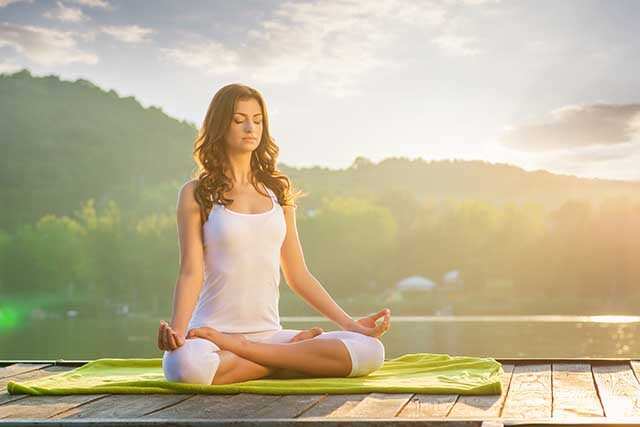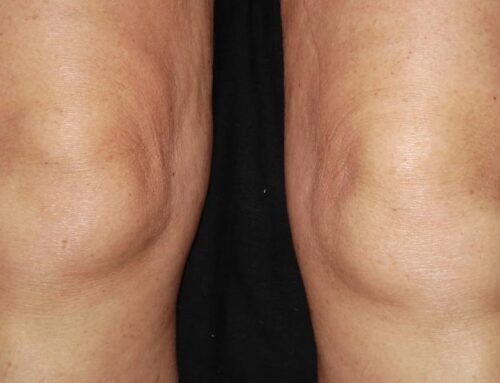Hatha yoga

Hatha yoga is a comprehensive term that includes all kinds of yoga* that are based on physical practice. So that includes styles like Ashtanga and Iyengar but not Kriya, Raja, or Karma yoga* that are not based on physical yoga practice. Hatha yoga* is best if you are just starting out as the pace is far slower than the other styles. The practice involves having to hold a pose Hatha classes for a few breaths and focuses a lot of meditation and correct breathing and postures. You will also learn some essential relaxation techniques.
Iyengar yoga

Founded by B.K.S. Iyengar, this form of yoga* is great for those who want to work on injuries and joint problems. It focuses on correct alignment of the body and very precise moves. These postures are held while holding your breath and the duration of each pose increases with expertise. The perfect pose is achieved with the help of props like straps, blocks, and blankets. This practice greatly improves stability, mobility, strength and flexibility.
Kundalini yoga

Kundalini yoga is one of those mysterious yoga practices that is as spiritual as it is physical. This form is physically demanding and mentally challenging and involves a lot of meditation, chanting, mudras and breathing exercises. The whole point if this style is to release the kundalini energy that is coiled in the lower spine. You have to do a lot of fast-moving postures with periods of relaxation where you will be taught to pay attention to internal sensations and the flow of creative energy so that you can tap into your kundalini-shakti. This style is for those who are looking for more than a workout.
Ashtanga yoga

Popularised by celebrities worldwide, Ashtanga or the “eight limb path” is very physically demanding so you should not do this if you are a beginner or not in great physical shape. It involves doing multiple surynamaskars followed by standing and floor postures. There are six series of postures that have to be repeated in every class. This kind of yoga is also called Power Yoga* and in this style, you start with the primary series and then graduate to the next level when you have mastered it. It takes years of practice to master this form.
Vinyasa yoga

This is an offshoot of Ashtanga and also involves a number of athletic yoga postures and each movement is coordinated with one’s breath. This is also a very physically demanding practice. The pace is quick and you will not have to hold anyone poses for too long. The key is to flow from one pose to the next so your heart rate gets pumping. Both Ashtanga and Vinyasa are great if your aim is to tone your body. It also works your core and upper body and gives you a cardio workout. This practice does not have a set structure and often depends on the teacher who might include some meditation and chanting.
Bikram yoga

Created by yoga guru Bikram Choudhury, the key feature of this practice is to do a set of poses in a room heated to 41 degrees centigrade and 40 percent humidity. In a 90-minute sequence, there are 26 basic postures that are done twice and two breathing exercises. The heat makes you sweat excessively thereby getting your body rid of toxins while the postures work every part of your body and bring oxygenated blood to all your internal organs. Drink plenty of fluids to rehydrate.
Hot Yoga

The hot yoga style is very similar to that of Bikram yoga. Here too, postures are held in a heated room, however, it is not restricted to the 26-pose sequence. If you like a sweaty workout, this one is for you.
Kripalu yoga

If you are seeking spirituality through yoga then you should explore Kripalu yoga. The focus of the practice is less on hectic asanas but on self-reflection, pranayama, deep relaxation, and meditation. The aim is to destress the mind and body for better health and self-awareness. Not as rigid as the other practices, this one requires you to modify poses according to your body’s needs.
Jivamukti Yoga

Yoga* is not just a workout but a deeply spiritual experience and if you want to know this practice in its totality then you should try the Jivamukti style. Founded in 1984 by Sharon Ganon and David Life, Jivamukti incorporates Vinyasa style postures and sequences accompanied by chanting, meditation, deep relaxation and pranayama. There is also some emphasis on philosophy, poetry and music. Jivamukti centres also offer courses in Hindu scriptures, Sanskrit and kirtans. Jivamukti proponents are also expected to be vegetarian.
Yin yoga

If you are not into too much hectic activity, then Yin yoga* is just the practice for you. This slow-paced style lets you hold poses for a longer time—from 45 seconds to two minutes. There are also a lot of seated postures and a focus on spirituality, inner peace and relaxation. By holding poses for a longer time, you stretch your connective tissue and make it more elastic. You also improve blood circulation and the qi energy in your body. Props help you relax into the postures instead of keeping your muscles flexed and taut. This style is often practised in a heated room to help your muscles become more elastic. You must not try this if you are super flexible (as you can get injuries if you over-stretch) or have any connective tissue disease.
Restorative yoga

If you are in a stressful job, this is just the yoga practice for you. As the name suggests, restorative yoga* postures are meant to relax and rejuvenate. Many of the classic yoga poses have been modified so that they are easier to do and are more relaxing. This practice helps you tap your parasympathetic nervous system so that you can truly relax your mind and body deeply. Like Iyengar yoga*, this style to takes the help of props like blankets, bolsters and yoga* blocks to help you perfect each yoga pose without straining yourself too much. If you are struggling with insomnia, anxiety, stress-related illnesses, then you should definitely try restorative yoga*.
Prenatal yoga

Prenatal yoga is a workout that pregnant moms can safely practice without putting the foetus at risk. It is specifically tailored for pregnant women in all trimesters. This kind of yoga works your pelvic floor muscles and teaches you breathing exercises that ease labour and delivery.
Anusara yoga

In this version of Hatha yoga, Anusara yoga has postures that are used in a Vinyasa practice and here too there is a lot of focus on alignment. However, in Anusara the mind-body-heart connection is key and you will be encouraged to uplift yourself, find inner peace and the “light within yourself.” This style uses props to help you reach the perfect pose.
Bizarre yoga trends

If all the types of yoga that we have listed above do not interest you, you can try some of these strange yoga* practices listed here. Just don’t blame us for the consequences!
Dog yoga: A favourite with pet owners, it involves doing yoga* with their dogs. There’s some stretching and massaging and, believe it or not, meditating, with the pooches!
Goat yoga: Fancy having a goat hop around on your back when you do yoga? Well, that’s exactly what this practice introduced by Oregon yoga* teacher Lainey Morse entails. The aim is to make you feel happy and loved as these goats cuddle up to you!
Naked yoga*: Only for the supremely body confident, nagna yoga* or vivastra yoga* as it is known in Sanskrit, involves doing asanas in the nude. The point is let go of self-consciousness and accept imperfections of the body.
Beer yoga: Can it get any better than this? Drink your favourite brew and lose the beer belly by doing yoga*. Created by a group called ‘BierYoga’ (Beer Yoga) from Germany, it lets you strike your favourite pose with your favourite pint.
Anti-gravity yoga: Invented by the aerial performer, a former gymnast and Broadway choreographer, Christopher Harrison, this difficult kind of yoga* involves other techniques like aerial acrobatics, callisthenics and Pilates as well.
Cannabis yoga/Ganjasana: If there was a match made in heaven, this is it. Invented by a group in Colorado, smoking up while doing yoga* will give you a more spiritual experience and heighten the effects of meditation.
Why you should try yoga

Don’t start any workout because it is a fad. Get into it because of all the benefits it offers you. Here’s what you will achieve if you practice yoga seriously.
Stress-relief: Stress is one of the biggest killers of our times and leads to a range of lifestyle and metabolic diseases. Yoga helps you manage stress and anxiety and thereby reduces their harmful effects on your body. The relaxation induced by yoga* lowers the levels of the stress hormone cortisol, your blood pressure and heart rate. It also improves digestion and the immune system.
Better sleep: Yoga* will make you less stressed and thereby help you sleep better. Research too has shown that yoga is a boon for people struggling with insomnia.
Relieves chronic pain: Studies have shown that doing yoga* on a regular basis helps manage chronic pain in people suffering from cancer, multiple sclerosis, autoimmune diseases, arthritis and joint pains.
More strength: Yoga* gives a full workout to all the muscles of your body so, over time, you gain a lot of all-over strength.
Flexibility and mobility: Yoga* makes you more flexible and that helps increase your mobility as well. Therefore you are able to do everyday movements like kneeling, bending or reaching out for something with much ease.
Detoxifies: The kind of physical activity that yoga* involves, helps your internal organs perform better and do their function of detoxifying your body at optimum levels. Deep yogic breathing improves lung function, while the sweat that is produced while doing yoga rids the body of toxins.
Inner peace: Is the daily grind and the constant commotion that you live in driving you crazy? Get back your inner calm by doing yoga. In fact, according to the Yoga Sutras of Patanjali, Sutra 1.2, Yoga chitta vrtti nirodha, or “Yoga is the stilling (regulation, quieting) of the turnings of the mind.”
Better breathing technique: Yoga* teaches us how to breathe in the correct manner by making us aware of our breaths. It helps us identify our breathing patterns and shows us how our emotions affect it. Taming our breathing can help calm us down. Deep yogic breathing is also very good for health and studies have shown that it is beneficial for the heart, brain, digestion and immune system.
Weight management: Even though yoga is a spiritual practice, it is also a kind of exercise that can help you lose weight and maintain it in the long run. While yoga makes you burn calories, it also helps you lose weight by curtailing the production of the stress hormone cortisol that makes you put on kilos. A yoga practice strengthens your core and results in better posture and upped general fitness levels.
Hotter sex: Yoga tends to raise the testosterone levels in the bloodstream thereby leading to an increased appetite for sex in both men and women. Yoga also makes you more confident in bed and heightens the sexual experience.



